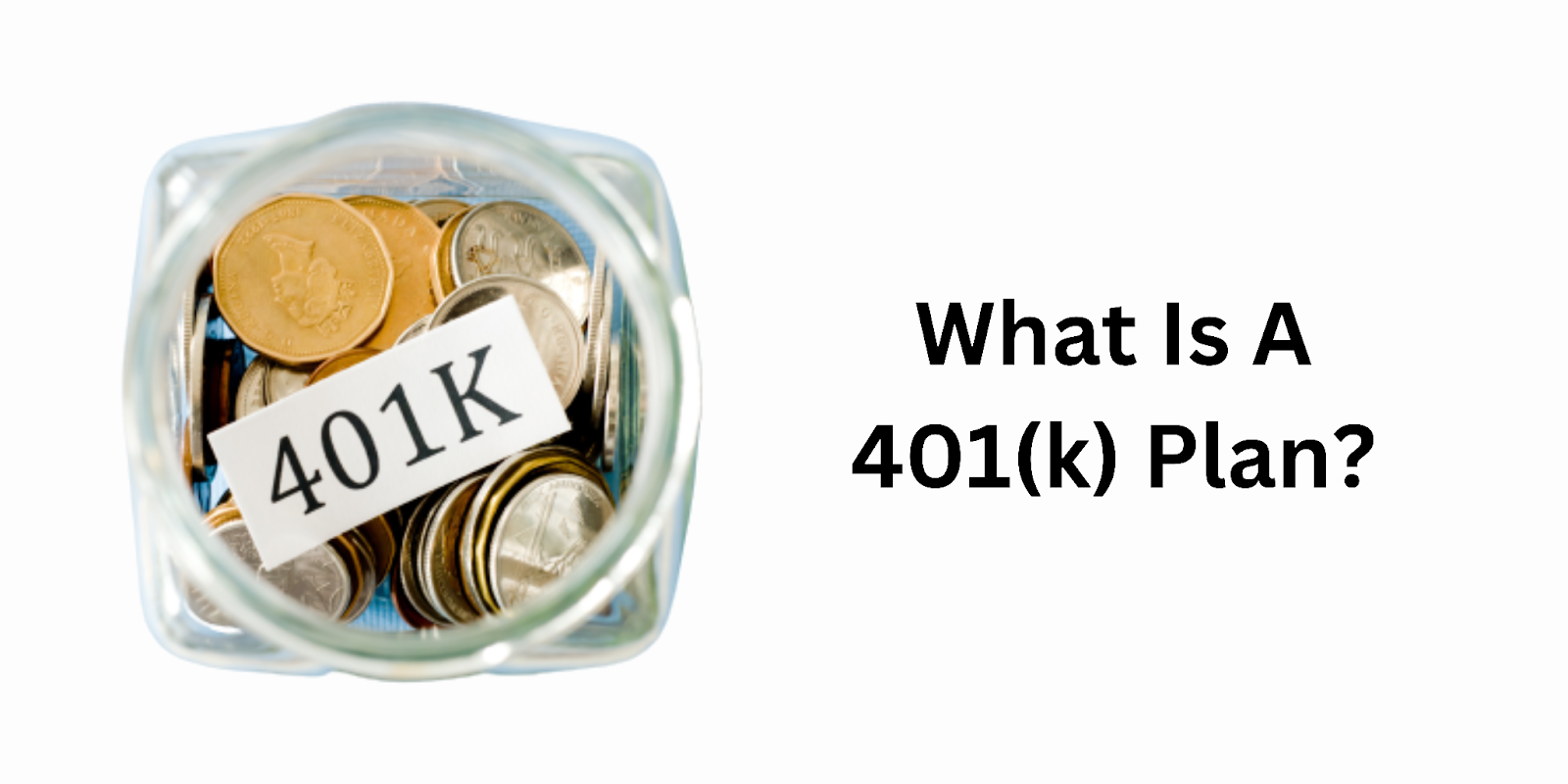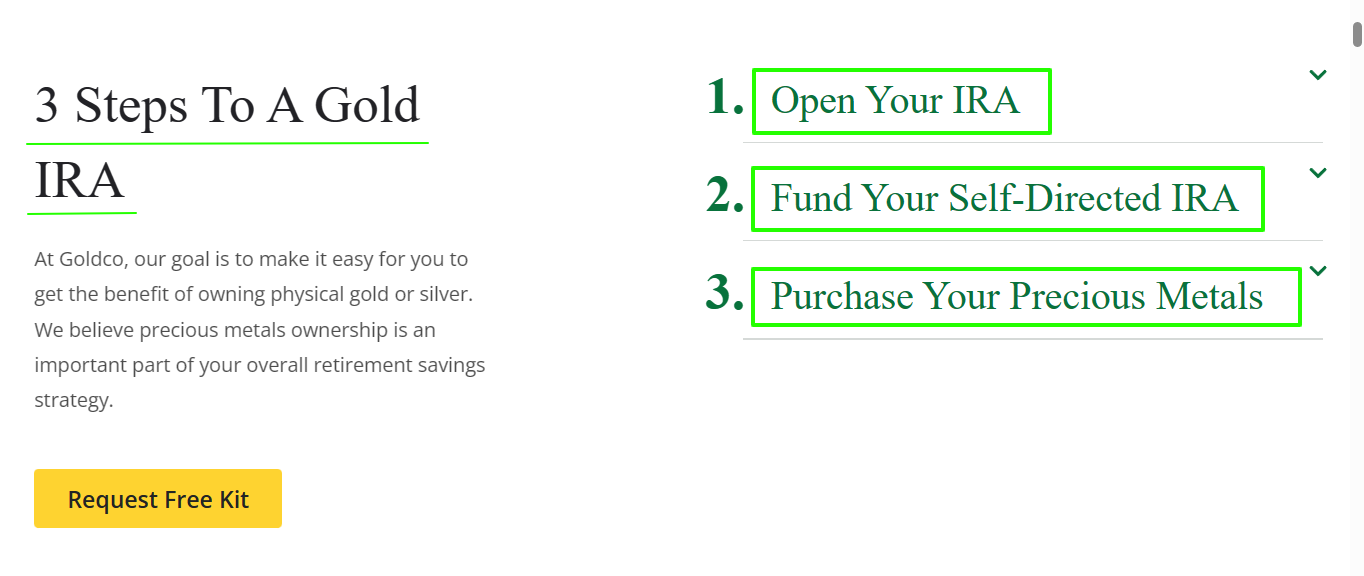Buying gold with retirement savings held in a 401(k) has been growing in popularity. More people today see gold as a safe and stable investment option which is why many are investing in gold. 401(k) accounts are a great source of tax-sheltered funds you can use to buy gold. However, you can’t buy physical gold with your 401(k). The best way to invest in physical gold is through a gold IRA or precious metals IRA rollover. Nonetheless, mutual funds and ETFs are the best way to buy paper gold assets directly in your 401(k).
If you’re new to investing in gold, I recommend starting with gold mutual funds or ETFs. They're an easy and cost-effective way to gain exposure to gold with lower expense ratios than physical gold. But if you’re set on physical gold bullion or coins, you’ll need to start by opening a self-directed gold IRA. This requires a gold IRA custodian like Augusta Precious Metals. You’ll then need to transfer your 401(k) funds to your new IRA to use the money to buy gold.
We all know that gold is a valuable and tangible asset. Whenever the economy gets shaky or when the stock market goes down, gold doesn’t lose value; it actually increases it. This makes it a great option to diversify your investment portfolio for retirement. But if your retirement funds are in a 401(k) plan, you can’t invest in physical gold directly. The good news is that there’s a workaround. In this post, you’ll learn that buying gold in a 401(k) is possible and how to do it.
We’ll walk you through the process of purchasing gold with your 401(k) through a rollover. You'll learn what gold IRA rollovers are, how they work and their pros and cons. So let’s get started and learn how to buy gold to secure your retirement.
The Basics Of 401(k)
A 401(k) is a retirement plan usually offered by employers to employees. Its name, “401k,” comes from a section of the U.S. Tax Code that allows you to defer paying income tax on your contributions until you retire. This helps you save more money for retirement since more money grows tax-free, compounding interests at a higher rate.

In a 401(k) plan, you can invest in a range of assets, including stocks, mutual funds, exchange-traded funds (ETFs), and even real estate. Your employers can also contribute to your 401(k) plan either through matching or non-elective contributions, helping you save even more for your retirement.
Although putting your retirement savings in a 401(k) might sound too good to be true, there are also rules and regulations you must follow. These include contribution limits, early withdrawal penalties, vesting (amount of time you have to work), and investment options.
Buying Gold In A 401(k): Is It Possible?
It’s precisely the 401(k) rules regarding investment options that relate to investing in gold. You see, it’s not possible to invest in physical gold in a 401(k) plan. Most 401(k) plans don’t allow you to buy and own physical gold directly or even gold derivatives such as futures or options contracts.
However, there’s a way around this limitation. Since 401(k)s do allow you to invest in paper assets like stocks or bonds, you can gain exposure to the gold market with your 401(k) by investing in gold funds, gold stocks, gold ETFs, or other gold-backed or gold-related paper assets that track the price of gold.
While this isn’t the same as investing in a real, tangible asset that you can hold or lock up in a safe, it does share some of the market performance features of gold itself.
Nevertheless, while investing in physical gold directly with your 401(k) may not be an option, there’s still a way to use your retirement savings to invest in gold by rolling over your 401(k) to a gold IRA. So, let’s compare the two types of accounts to understand better how this works.
401(k) Vs Gold IRA
401(k)s and gold IRAs are both retirement account options that allow you to invest a part of your income (known as contributions) in a wide range of investments. Both also offer tax benefits depending on your type of account and financial situation. However, Gold IRAs are different in that they’re specifically designed to let you diversify your retirement portfolio by investing in gold. The following table highlights the difference between the two types of accounts.
| 401(k) | Gold IRA | |
| Investment Options | Stocks, bonds, mutual funds, and ETFs. | Physical gold and other precious metals like silver, platinum, and palladium. |
| Tax Benefits | Pre-tax contributions | Pre-tax or after-tax contributions, depending on the type of account. |
| Contribution Limit | $22,500 ($30,000 if you’re 50 or older) | $6,500 ($7,500 if you’re 50 or older) |
Both types of accounts have their pros and cons and, while you may want to have one account over the other, it’s probably a better choice to have both, particularly in light of the different contribution limits.
With that in mind, let’s look at the best options when it comes to buying gold in a 401(k).
401(k) And Gold Investing: Mutual Funds And ETFs
As stated before, you can only gain exposure to the gold market in a 401(k) by investing in gold-related paper assets like gold stocks, mutual funds, and ETFs.
Gold Mutual Funds
Mutual funds can invest in gold either directly or indirectly. Direct gold investing means that the fund invests in physical gold bars and coins, while indirect gold investing means it only invests in companies that mine or produce gold products. This type of investment vehicle is managed by professionals; thus, they usually charge you management fees to keep your account running. This makes mutual funds an expensive option with an average expense ratio in 2021 of 0.68% for actively managed equity mutual funds.
Gold Exchange-Traded Funds (ETFs)
Exchange-traded funds or ETFs are similar to mutual funds in that they’re also managed by professional fund managers. However, this investment is traded like stocks, so its gold investments are bought and sold throughout the day (unlike mutual funds that are traded at the end of the working day). ETFs also have lower fees or expense ratios compared to mutual funds (an average of 0.49% for actively managed funds in 2021), which makes them more cost-effective, providing better returns in the long run.
While investing in gold mutual funds and gold ETFs in your 401(k) is a simple way to diversify in gold, you should note that these paper assets don’t track the price of gold perfectly.
For example, Gold ETFs are designed to correlate to the physical gold price because they are funds that invest in physical gold, gold futures, gold options, or gold mining stocks. However, they may not always track the price of gold perfectly due to factors such as fees, expenses, tracking errors, supply and demand, market sentiment, and liquidity, to name a few.
401(k) And IRA Rollovers
The only real way to invest in tangible gold with your 401(k) (or at least with the money you’ve invested therein) is to move that money to a self-directed Gold IRA, something known as a gold IRA rollover.
A gold IRA rollover allows you to invest and store physical gold or other precious metals legally in a tax-benefitted retirement account. This process can be done in two ways:
- A direct rollover, where you get your 401(k) account manager to transfer your funds directly to a gold IRA by working with a gold IRA custodian.
- An indirect rollover, where you withdraw your funds from your 401(k) and deposit them by yourself into a gold IRA within 60 days.
The direct rollover doesn't incur any extra taxes or early withdrawal penalty fees. The indirect rollover doesn’t either, as long as you deposit the money in a gold IRA within the said 60 days of withdrawing your funds.
However, if you take longer than that, you will have to pay the IRS the 10% early withdrawal penalty.
Precious Metals IRA Rollover
The process of a precious metal IRA rollover works just like a gold IRA rollover. Your funds can be moved directly or indirectly. The only difference is that, besides gold, you can also invest your retirement savings in physical precious metals such as silver, palladium, and platinum.
The difference between a precious metals IRA and a gold IRA is that the precious metals IRA offers a wider range of precious metals investments, providing more opportunities for diversification.
How To Buy Silver In A 401(k) Plan
If you want to invest in silver instead of gold with your 401(k), the process is the same as with gold. As mentioned earlier, you need to roll over or transfer your 401(k) funds to a self-directed IRA—in this case, a silver IRA, a precious metals IRA, or a gold IRA that also allows investing in silver (some gold IRAs do).
So, you start by choosing a precious metals IRA custodian or a silver IRA custodian to set up a silver IRA (or some Gold IRAs could also work). Once completed, you can contact your 401(k) plan manager to transfer your funds to your new IRA account and have your silver IRA custodian purchase your silver using the funds of your previous 401(k) plan.
Investing in gold can be confusing if you’re new to the world of investments and personal finance. Thus, before making any decisions, you may want to seek the advice of a financial advisor to help you determine which IRA rollover is the best fit for your retirement goals. You may also benefit from signing up for an investment newsletter like Capitalist Exploits to receive relevant investment recommendations delivered directly to your mailbox.
How To Buy Physical Gold In A 401(k) Through A Gold IRA Rollover: A Step-By-Step Guide
Here are the steps to invest your retirement savings in physical gold by rolling over your 401(k) to a gold IRA.

#1 Open A Self-Directed Individual Retirement Account (IRA)
The first step is to open a self-directed IRA account—like a gold IRA—that allows you to invest in physical gold and other precious metals. You can choose between multiple reputable gold IRA custodians like Augusta Precious Metals or Goldco to open your account.
#2 Fund Your Gold IRA
After you’ve opened a gold IRA with the IRA custodian, it’s time to fund it by transferring your 401(k) savings to your new gold IRA. As we’ve mentioned before, you can fund your account either through a direct or an indirect rollover.
#3 Choose An Experienced Gold Dealer
Once you get a notification from your IRA custodian that your account has been funded, you can now choose a gold dealer that you can trust to purchase physical gold. This step isn’t necessary with most big gold IRA companies like Augusta Precious Metals, Goldco, and Noble Gold, since those companies usually act both as custodians and as gold dealers.
Be aware of the dealer you’re communicating with and ensure that they have a good performance history to avoid scams.
If you’re having difficulty choosing a gold dealer, I suggest that you look up the “Best gold dealer in the United States.” These dealers may include the top ones such as APMEX, Golden Eagle Coins, and JM Bullion. Or choose a gold IRA company that both acts as a custodian and a gold dealer like Augusta Precious Metals or Goldco to skip this step.
#4 Buy Your Gold
After choosing your gold dealer (or working with a custodian/dealer), you can now buy your own physical gold using the funds in your gold IRA. If you’re using a separate dealer, it’s up to you to ensure that the gold you’re purchasing meets the IRS standard to be eligible for a gold IRA. The gold bars or coins must have a minimum fineness of 0.995 or 99.5% pure gold or have been minted by a government mint like the U.S. Mint.
#5 Store Your Gold In An IRS-Approved Depository
It’s possible for some high-net-worth individuals to store their gold in a home storage gold IRA, but this is seldom the case. In most cases, your gold has to be stored in secured, IRS-approved depositories like Brink’s or Delaware Depository. Your IRA custodian usually chooses which depository to store your gold in, but you can sometimes choose your own depository or a bank that offers safe deposit boxes. Just make sure to check that it’s IRS-approved for a gold IRA.
At this point, you must take note of the fees of storing your gold investments. These may include an annual storage fee that ranges between $100 to $150 depending on the depository and if you want it segregated (separated from others’ physical gold in one depository) or non-segregated.
#6 Monitor Your Investments
After purchasing and storing your physical gold, it’s time to sit back, relax, and monitor your investment. You shouldn’t just leave your gold by itself unattended until you retire. The value of gold can be volatile, especially when there is an economic crisis. Therefore, you should keep track of your gold and make any adjustments to your retirement portfolio if necessary.
Benefits Of Buying Gold In A 401(k) A.K.A. The 401(k)-To-Gold IRA Rollover
If you’re feeling bored with your traditional investments, and you want something to add a little “sparkle” to your retirement portfolio, adding gold to the mix may be what you’re looking for. But rolling over your 401(k) to a gold IRA has several other benefits, including:
- Diversification: gold has a negative correlation to other assets like stocks and bonds, which means that gold does well when the stock market goes down. This reduces your overall risk in an economic downturn.
- A Hedge Against Inflation: for years, the value of gold has been increasing over time, which can be used as a defence against the decline of purchasing power.
- Growth Potential: Gold has historically increased in price, making it an attractive asset for portfolio growth. This is especially true today since gold is used for modern consumer electronic devices and aerospace technology.
In Summary
Buying gold with a 401(k), either through a gold or precious metals IRA rollover, is a great way to invest in gold for the long term. This method involves transferring your retirement funds from your 401(k) to a gold IRA with a third-party IRA custodian. If done correctly, you won’t be paying the 10% early withdrawal fee, especially if you do a direct rollover through your custodian and 401(k) manager instead of making the withdrawal and depositing the funds into a Gold IRA yourself.
The gold IRA rollover is the best option for investors who want to diversify their retirement portfolio with physical gold or other precious metals. However, although it may offer benefits such as control and protection against economic uncertainties, it’s still recommended to do your research to see if this investment fits your retirement goals and risk tolerance.
Gold 401(k) FAQs
Is gold a good retirement plan?
Yes, gold can be a good retirement plan since it offers numerous benefits such as diversification, tax benefits, inflation hedge, and increased value. However, it is best to have other alternative investments since putting all your eggs in one basket might increase your risk of economic downturns.
How do I get gold in my 401(k)?
You can get gold in your 401(k) by investing in gold paper assets like gold mutual funds or gold ETFs that track the price of gold. However, you can’t invest in physical gold with your 401(k). You’ll need to transfer your funds from your 401(k) to a gold IRA. After your funds have been moved, you can then purchase the gold you want for your retirement portfolio.
How can I convert my 401(k) to gold?
You can convert your 401(k) to gold through a gold IRA rollover. You can talk to your financial advisor about how to transfer your funds correctly or contact your 401(k) custodian to assist you in transferring your retirement funds to a gold IRA custodian.
Can I put all my 401(k) into gold?
Yes, you can put all your 401(k) funds into gold through mutual funds, ETFs, or by transferring it to a gold IRA. However, it’s not recommended to put all of your retirement funds into one asset class, since there isn’t enough diversification, and it can be too risky. One thing to note is that you must be careful not to exceed the gold IRA contribution limit, which is $6,500 if you’re under 50 or $7,500 if you’re 50 or above.
How can I transfer my 401(k) to gold without penalty?
You can transfer your 401(k) to a gold/gold IRA without penalty through direct or indirect gold IRA rollover. You can do this process either by working with a gold IRA custodian or withdrawing your funds and depositing them into a gold IRA within 60 days. Both of these methods don't require you to pay penalties. However, if you didn’t deposit the funds within the period, then you’ll be paying a 10% early withdrawal fee.


